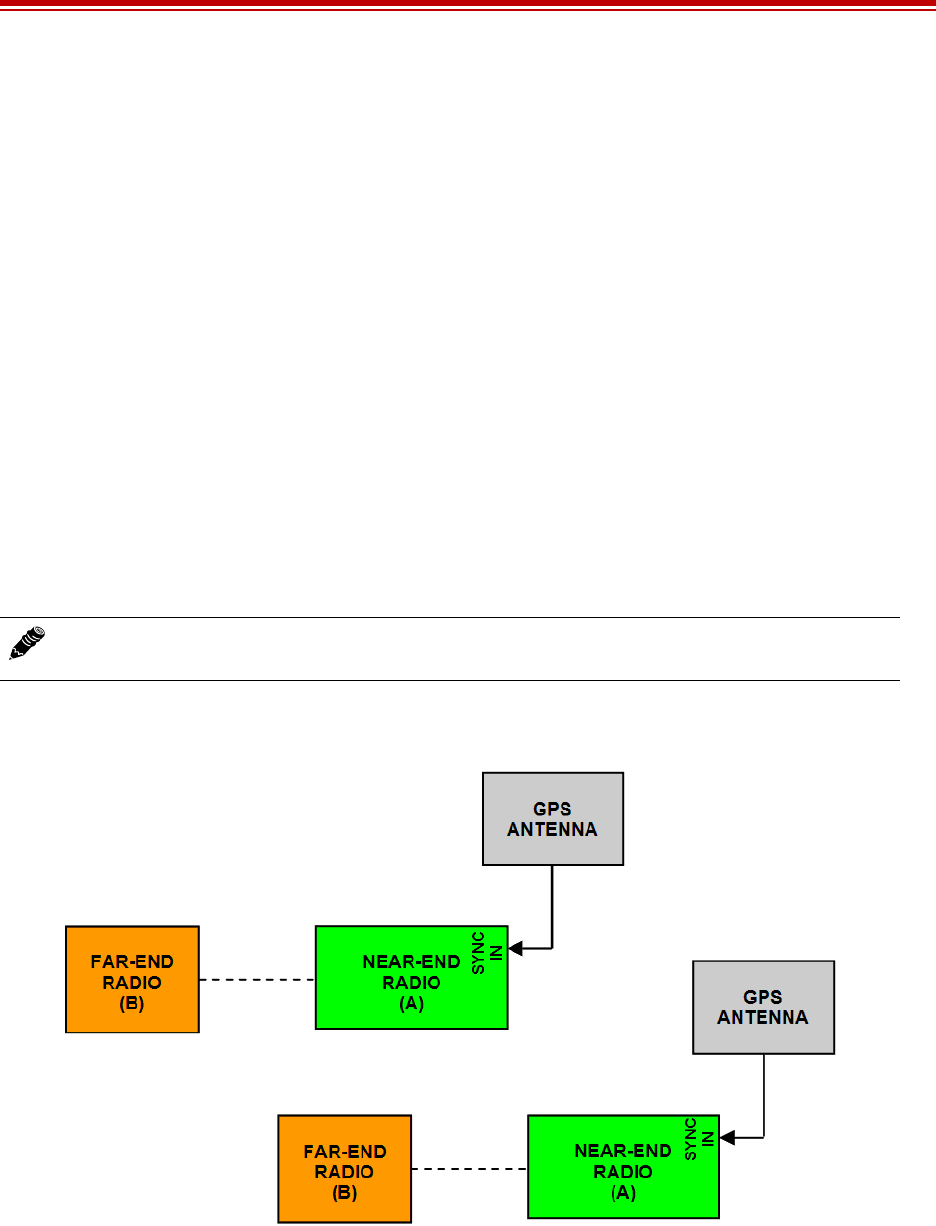User Manual
Table Of Contents
- ExtendAir® (TDD) Series Digital Microwave Radios Installation and Management Guide
- Legal Notice
- Open-Source License Information
- Table of Contents
- Notes for Customers of the Cisco Configuration ExtendAir r5005
- About this Document
- Introduction
- Pre-installation Tasks
- Link Engineering and Site Planning
- Familiarization with the ExtendAir (TDD) Series Radios
- Initial Configuration and Back-to-Back Bench Test
- Time Division Duplex (TDD) Factors
- Link Orientation and Synchronization
- Radio Synchronization
- Offset Timing
- Virtual Local Area Network (VLAN)
- Simple Network Management Protocol (SNMP)
- System Installation and Initiation Process
- Installation
- Configuration and Management
- Telnet into the Command Line Interface (CLI)
- Telnet
- Exalt Graphical User Interface (GUI)
- Quick Start
- Navigating the GUI
- Radio Information Page
- Administration Settings Page
- NTP and Time Zones Configurations Page
- Simple Network Management Protocol (SNMP) Configuration
- File Management Pages
- File Transfer Page
- File Activation Page
- System Configuration Page
- Ethernet Interface Configuration Page
- T1/E1 Configuration Pages
- VLAN Configuration Page
- Ethernet Rate Limiting
- QoS Configuration Page
- Automatic Channel Selection (ACS) Page
- Syslog Configuration Page
- GPS Information Page
- Alarms Page
- Performance Page
- Event Log Page
- User Throughput Page
- Diagnostic Charts Page
- Spectrum Analyzer Page
- Ethernet Utilization Page
- Reboot Page
- Manual Page
- Specifications
- Interface Connections
- Antennas
- Troubleshooting
- Back-to-back Bench Testing
- General Compliance and Safety
- Dynamic Frequency Selection
- Safety Notices
- Regulatory Notices
- Regulatory Compliance
- EIRP Limits for the United States and Canada
- EIRP Limits for Australia
- EIRP Limits for the European Union and ITU Countries
- Declaration of Conformity to the R&TTE Directive 1999/5/EC
- Exalt Limited Hardware Warranty Software License and RMA Procedures Agreement
- Copyright Notices
- Index

Exalt Installation and Management Guide
ExtendAir (TDD) Series Digital Microwave Radios
203591-011 13
2013-02-22
• Internal sync, using one radio to synchronize to multiple collocated links. This can be
accomplished with one or more sync distribution accessories (sold separately). The ideal solution
for networks that have multiple links at one location and do not have other nearby links or
repeaters and multi-link backbones.
Virtually any combination of hubs and repeater sites, star configurations, and/or backbones can be
implemented with synchronization. It is typically necessary or ideal in each configuration to match the
following parameters on every radio in the network:
• Link Distance – Match to the longest distance link in the network.
• Frame Length – Match to the lowest frame length to optimize total system latency (for example,
for TDM networks) or match to a highest frame length to optimize user throughput. Choose an
intermediate value to compromise between latency and throughput.
• Mode – It is desirable, but not always necessary, to match the mode for all collocated links.
• Bandwidth – It is desirable, but not always necessary, to match the bandwidth for all collocated
links.
For complex networks, an Exalt engineer should review multi-link networks before deployment as
several factors can optimize the network for desired performance.
Figure 4 illustrates two separate radios benefiting from synchronized GPS sources.
Figure 4 Synchronized GPS sources
Figure 5 illustrates the recommended synchronization method for two links that share a common site at
one end of each link. Using internal sync, a cable can be connected between the two radios to
accomplish sync. No GPS receiver is required. This approach cannot be used for more than two
collocated radios.
Note: When GPS Sync is enabled, link initiation typically takes 1 to 3 minutes to allow for
the radio to properly synchronize to the available GPS satellites.










